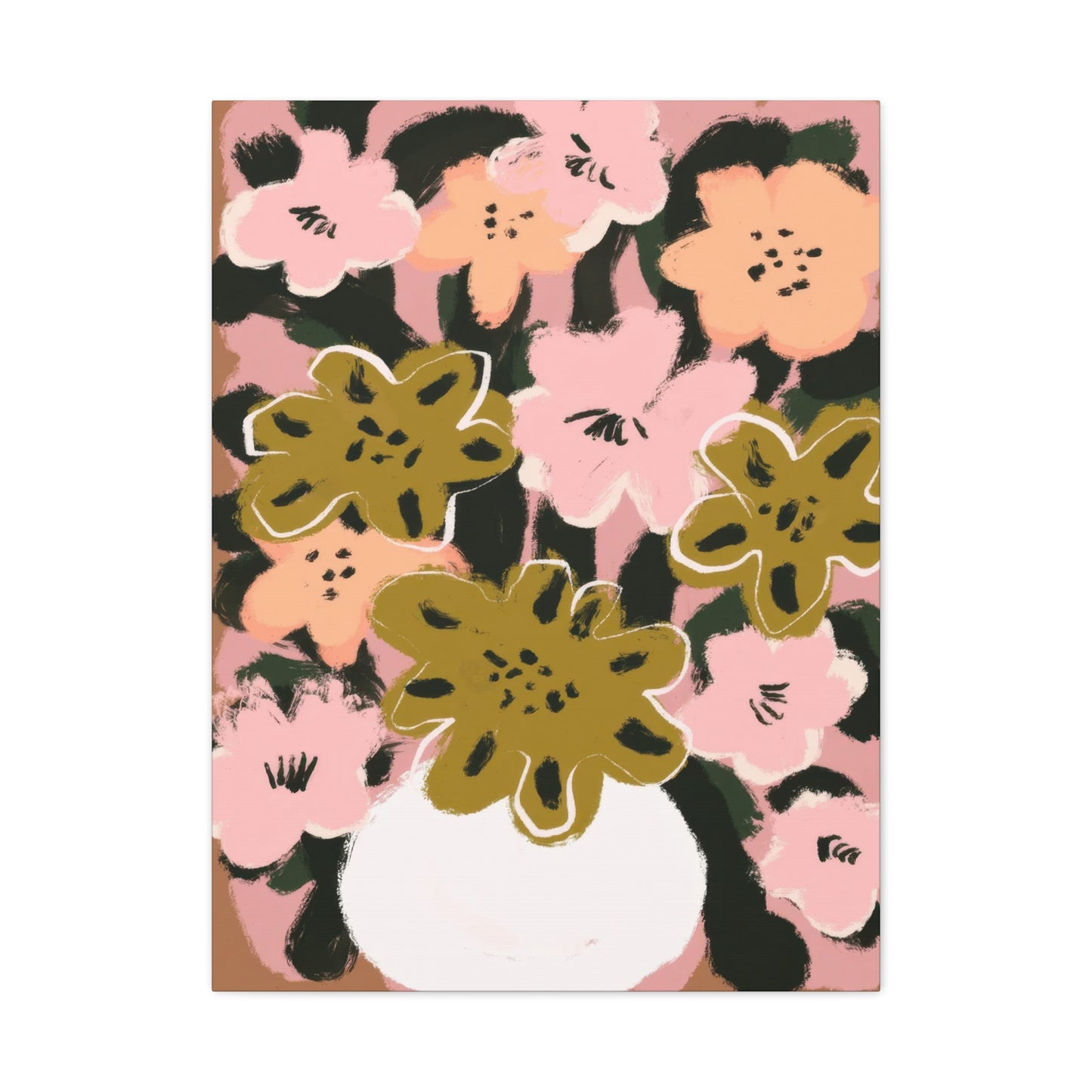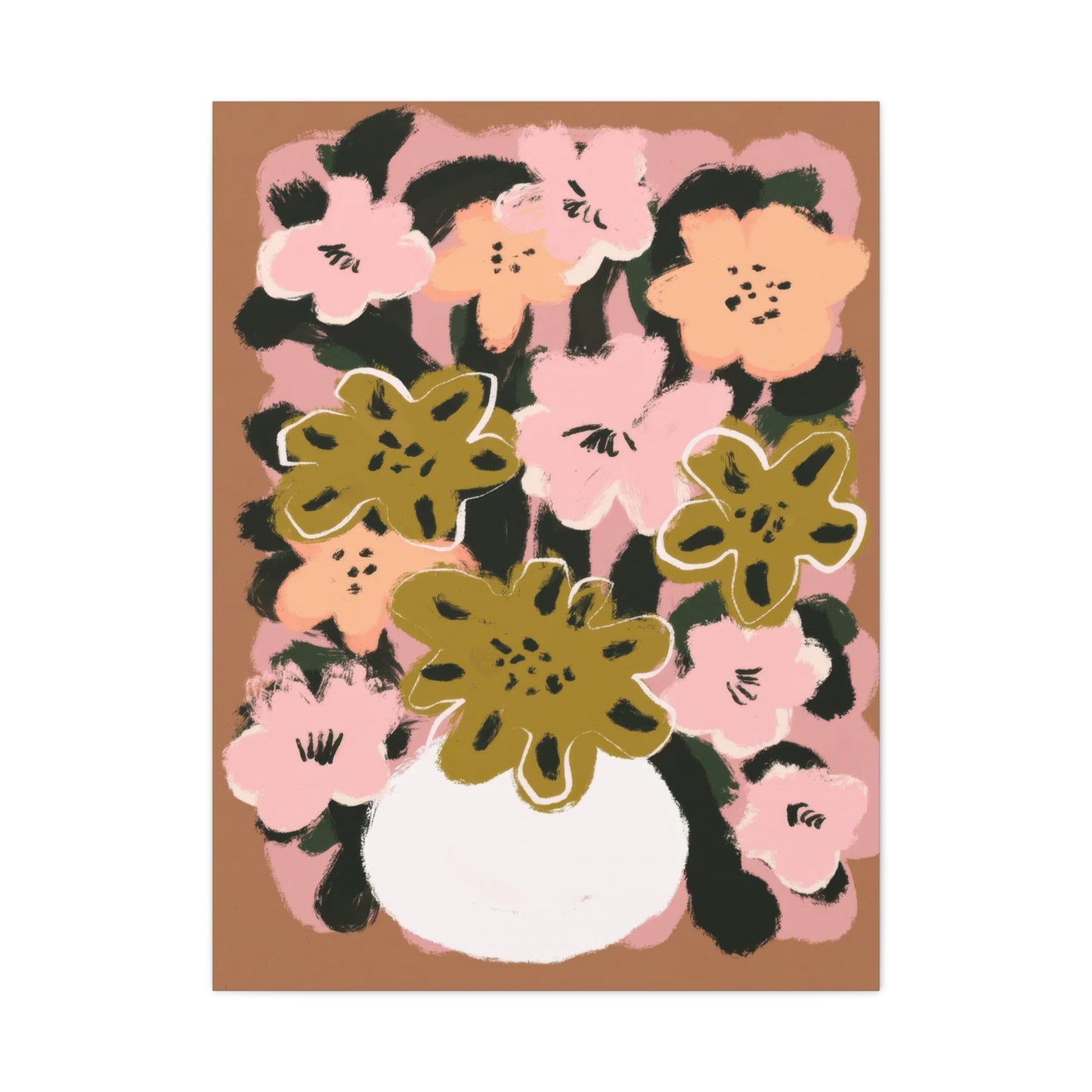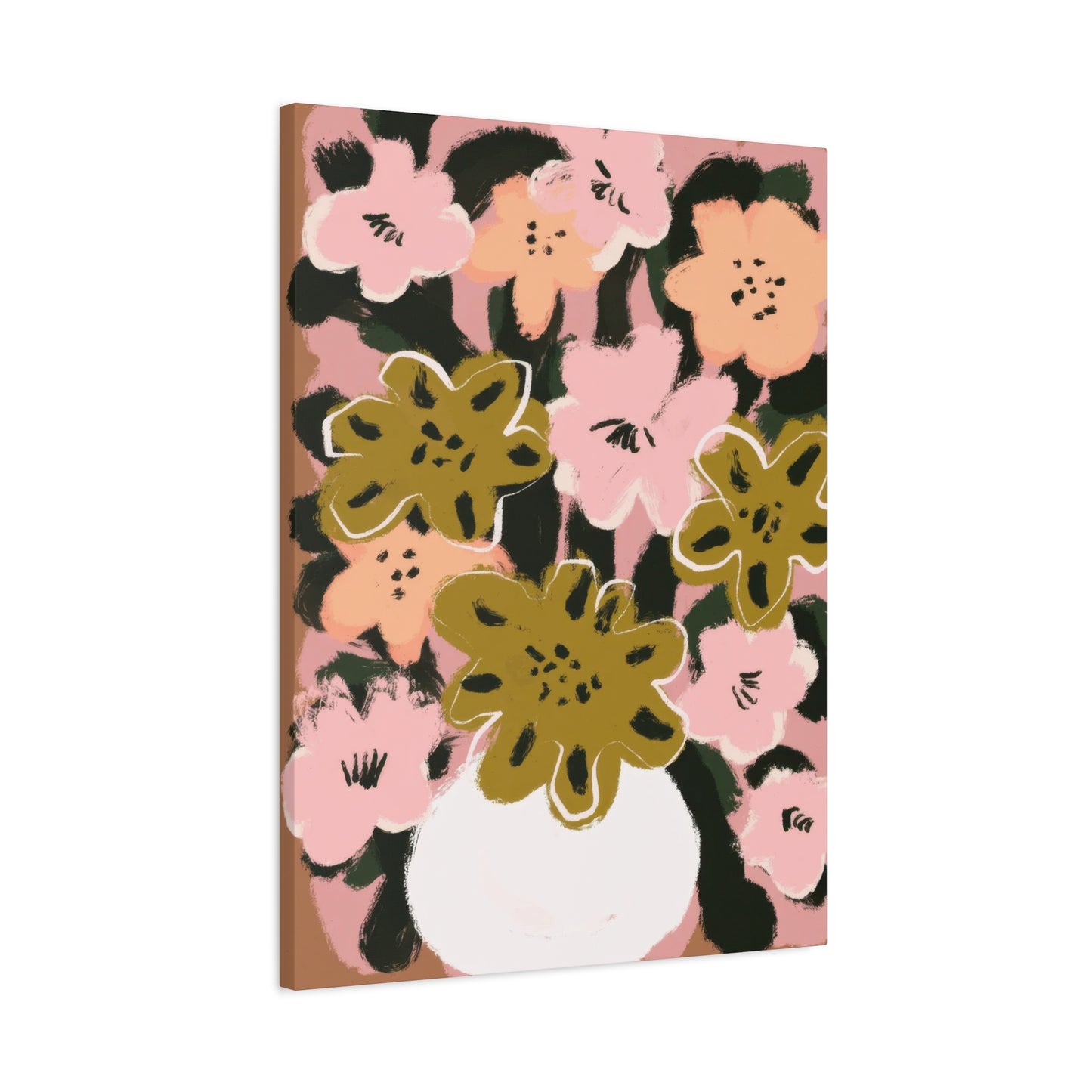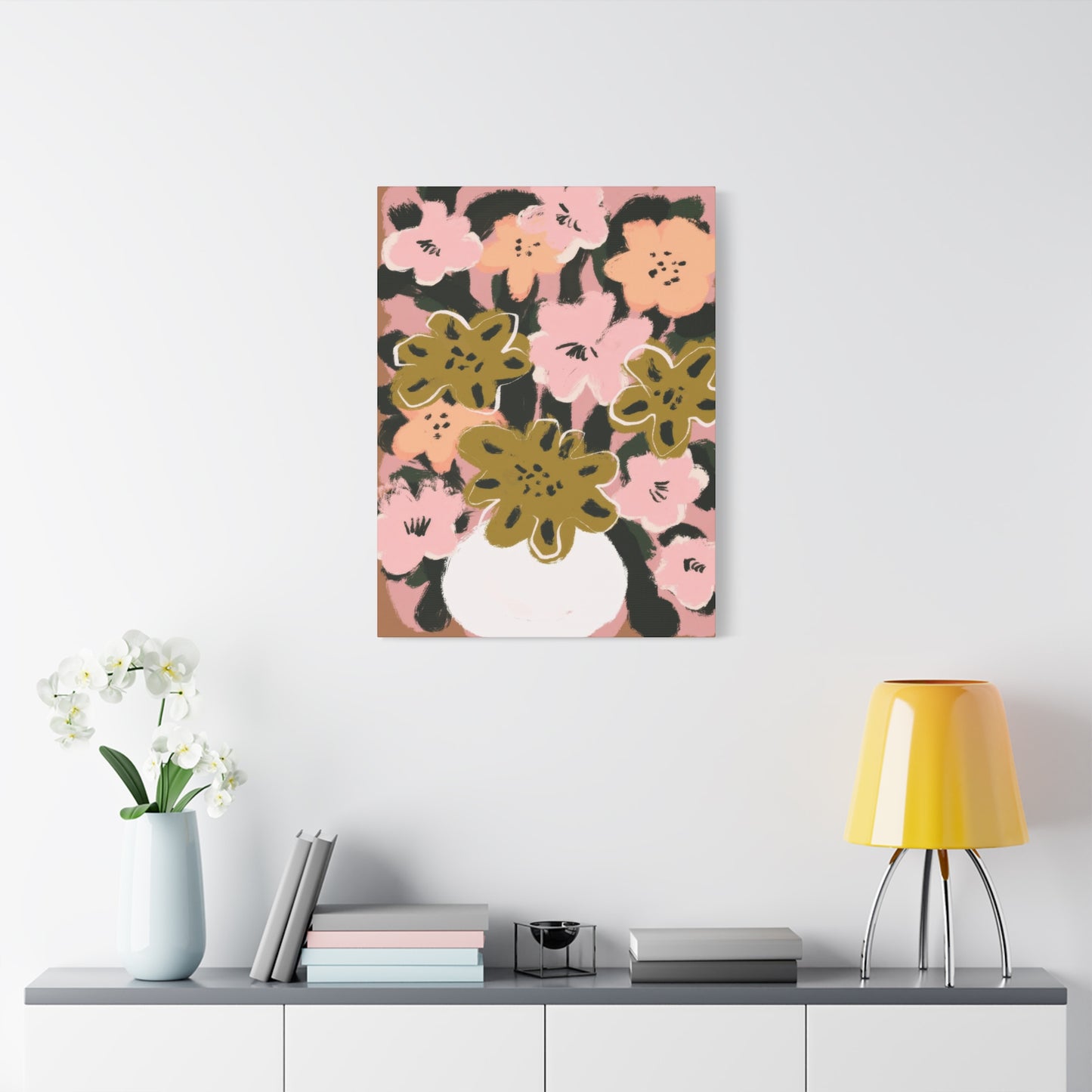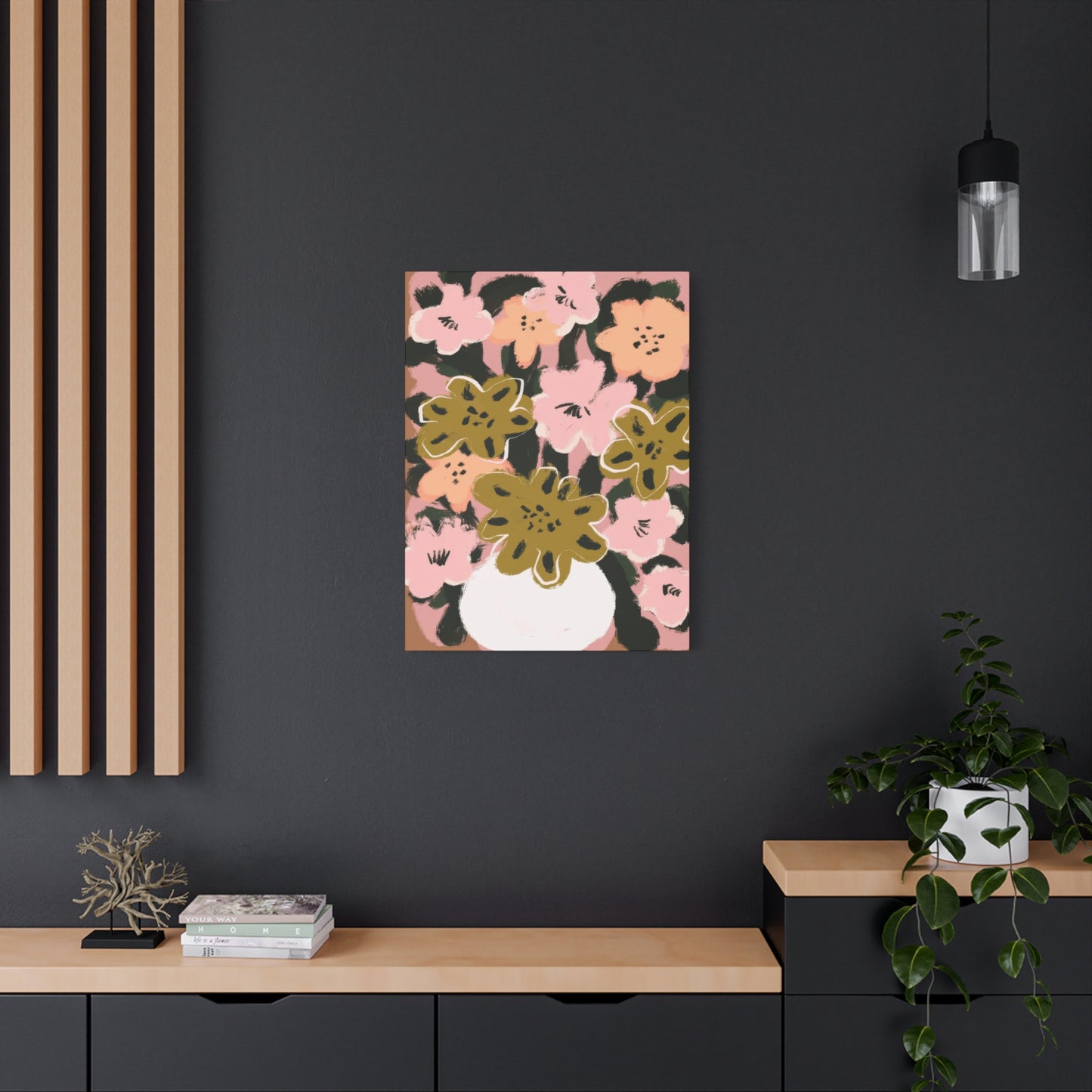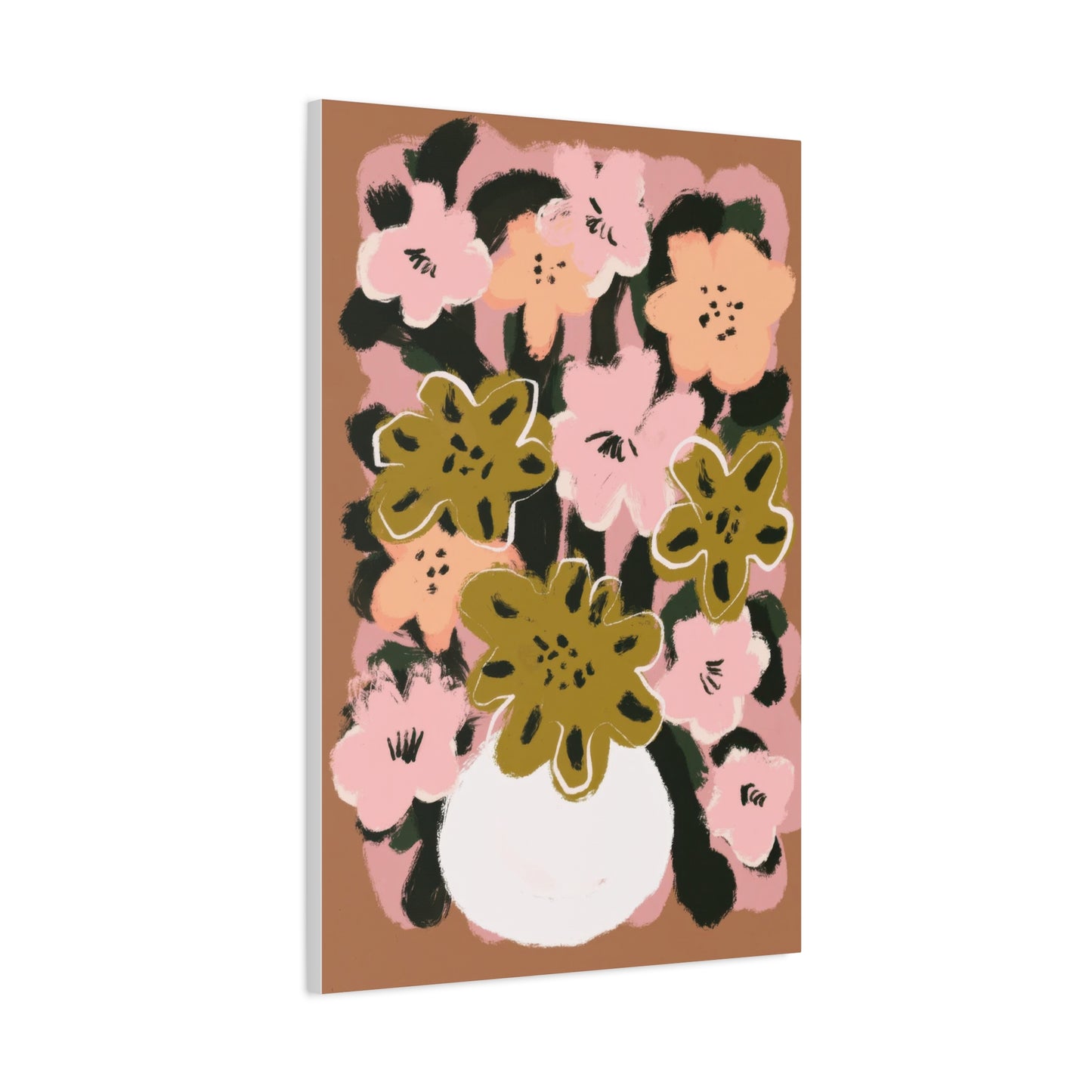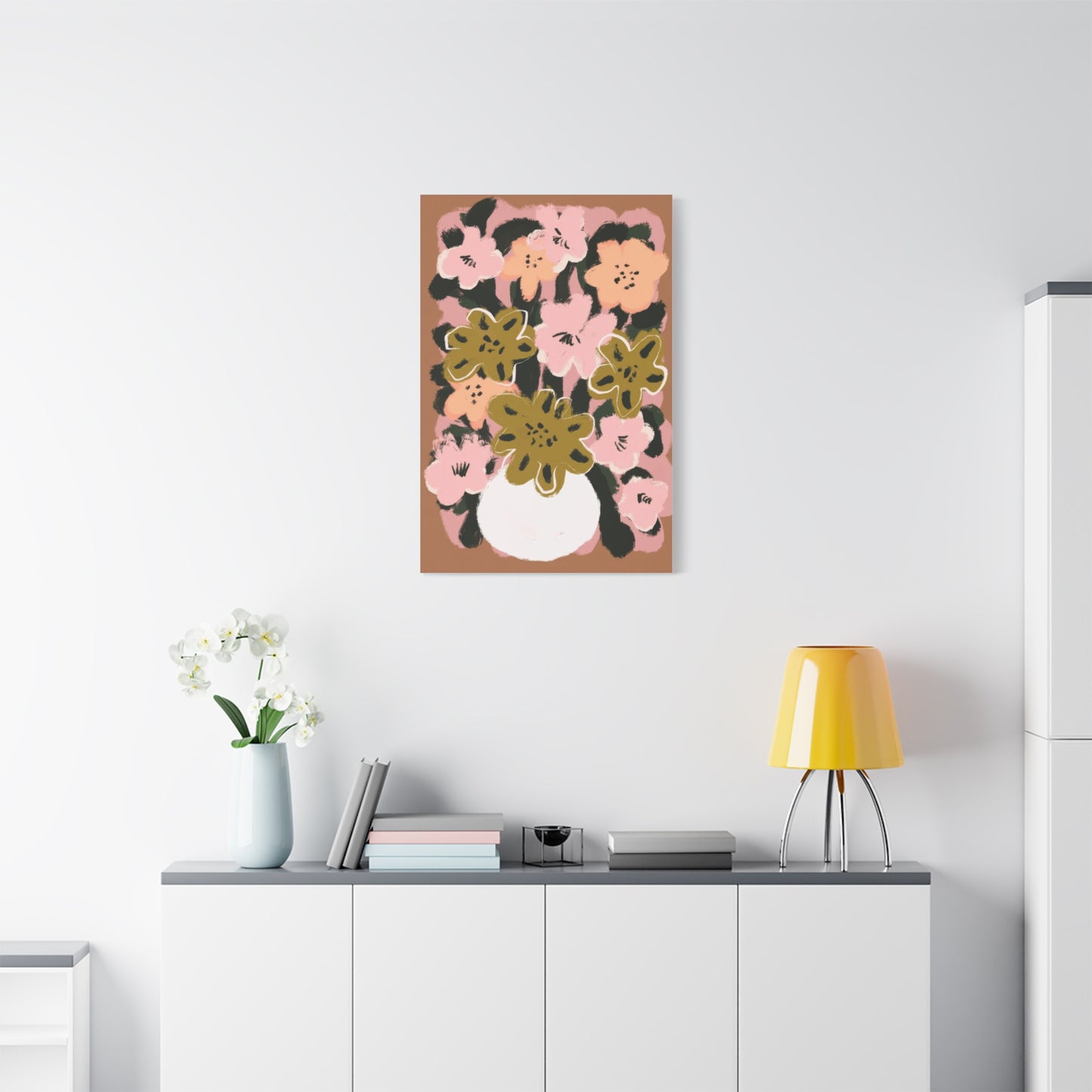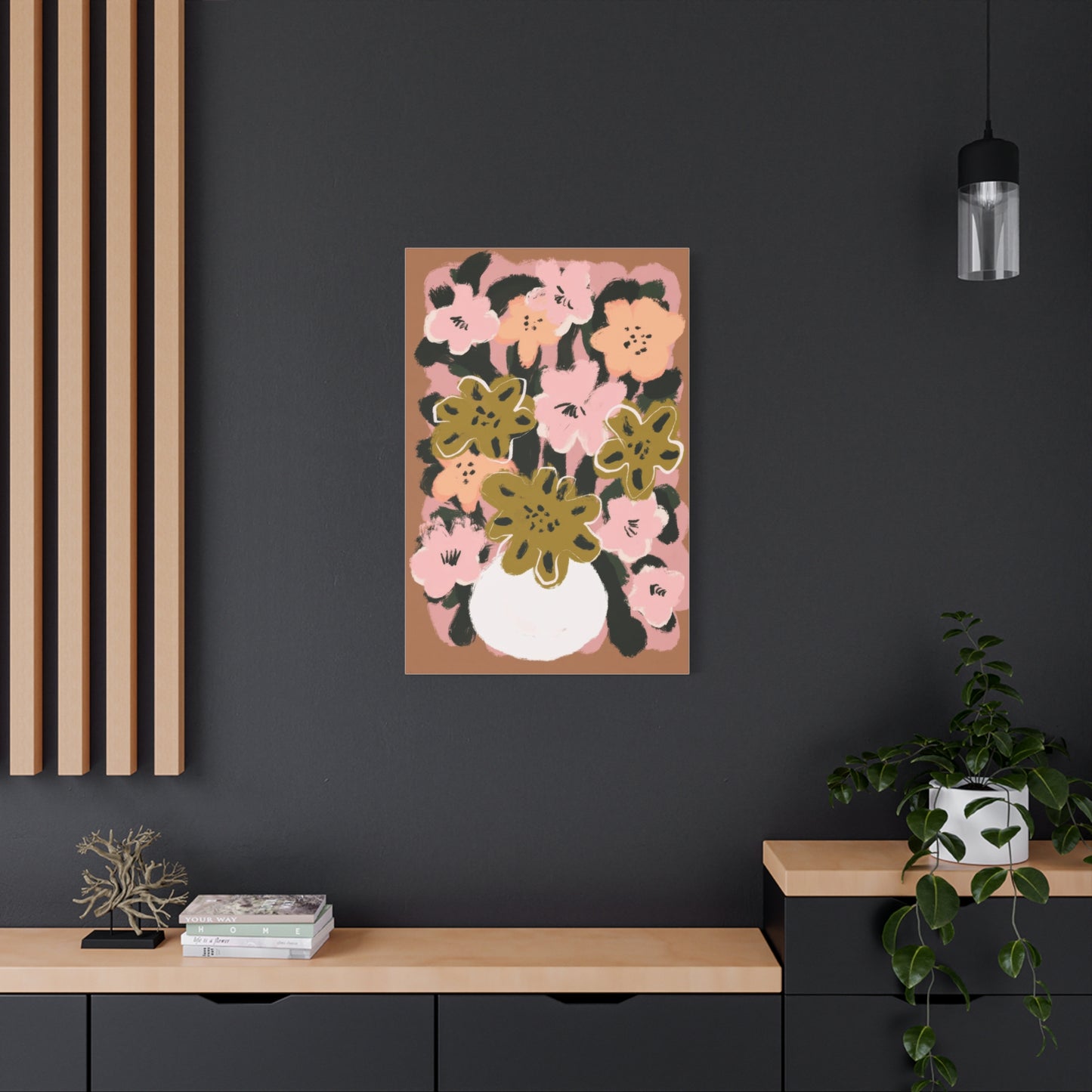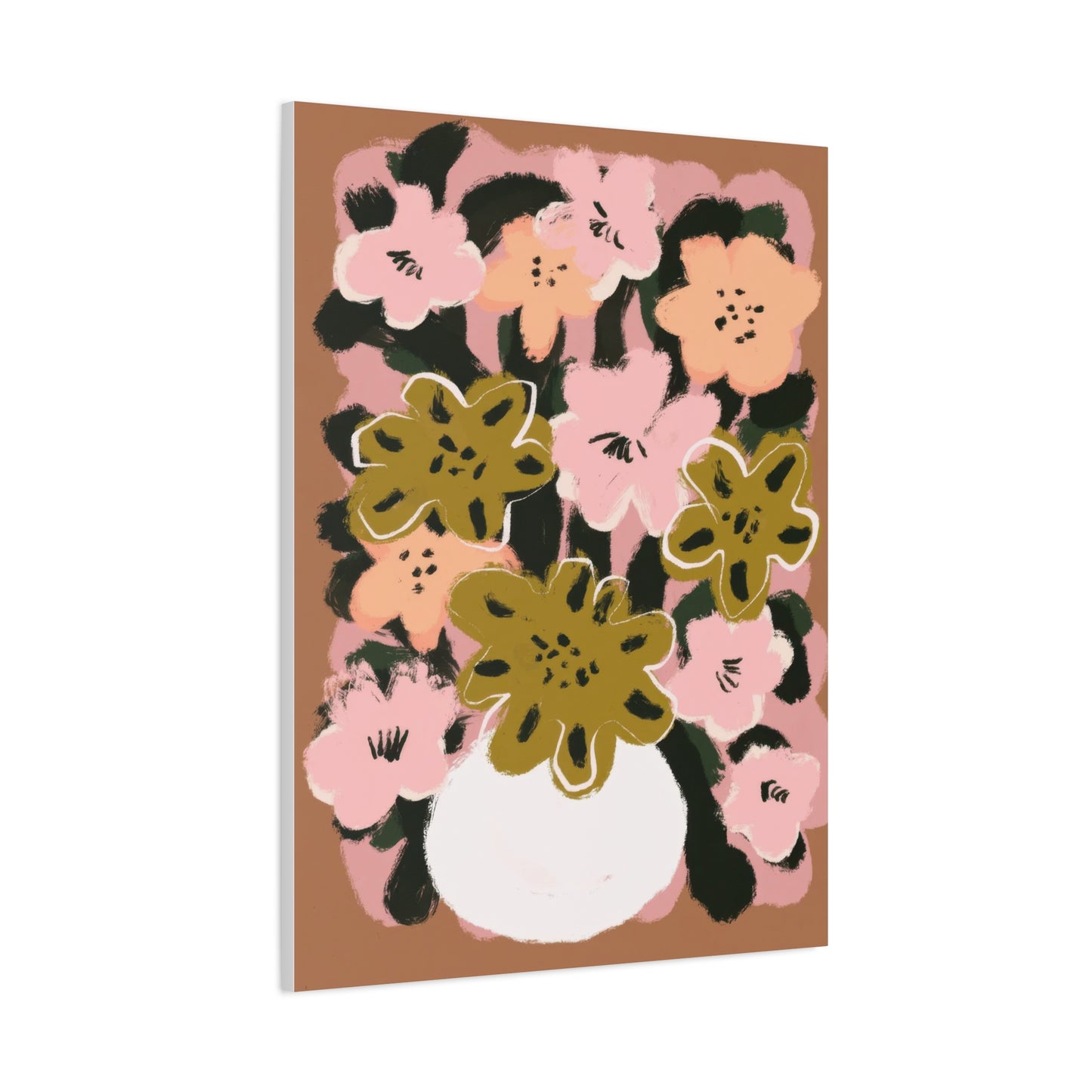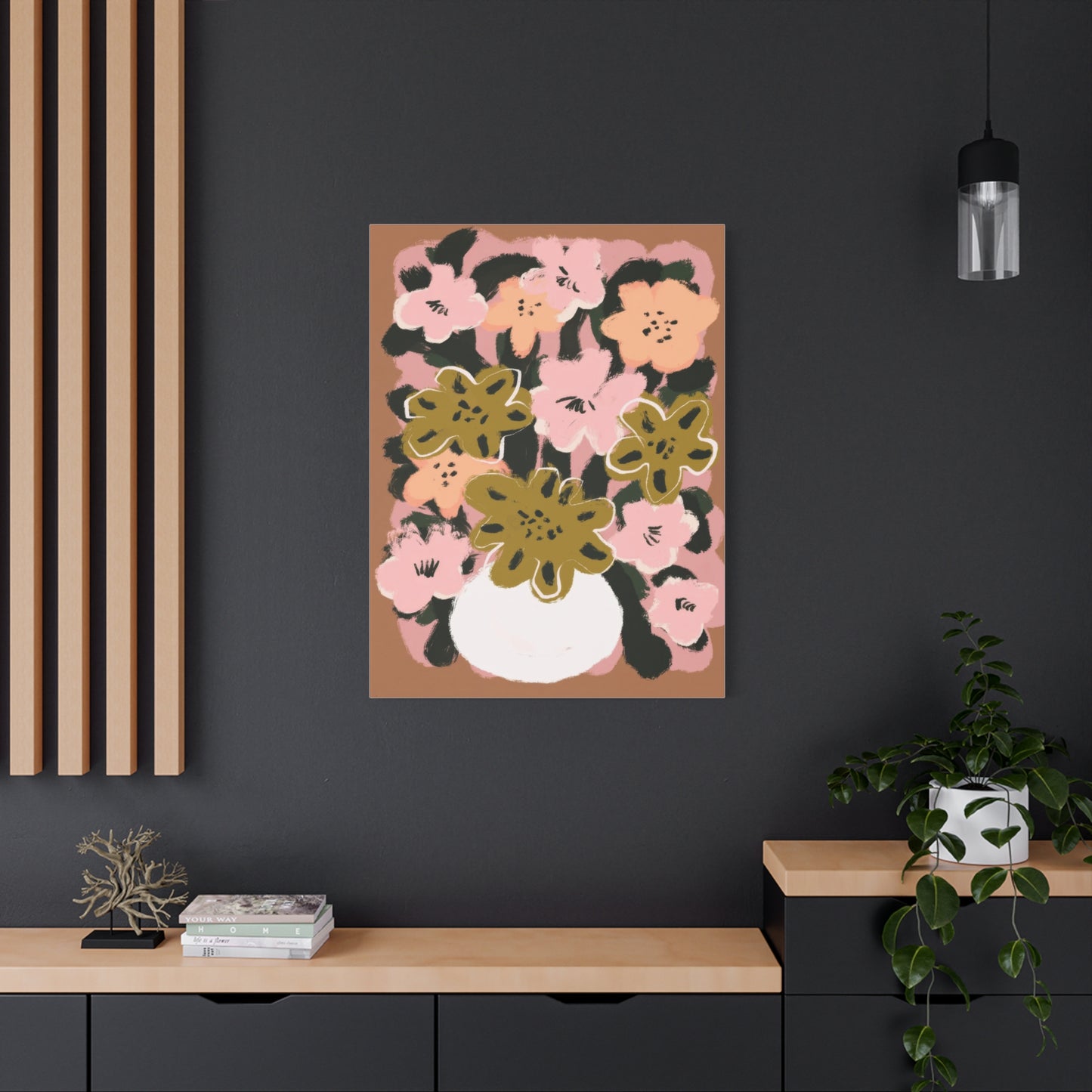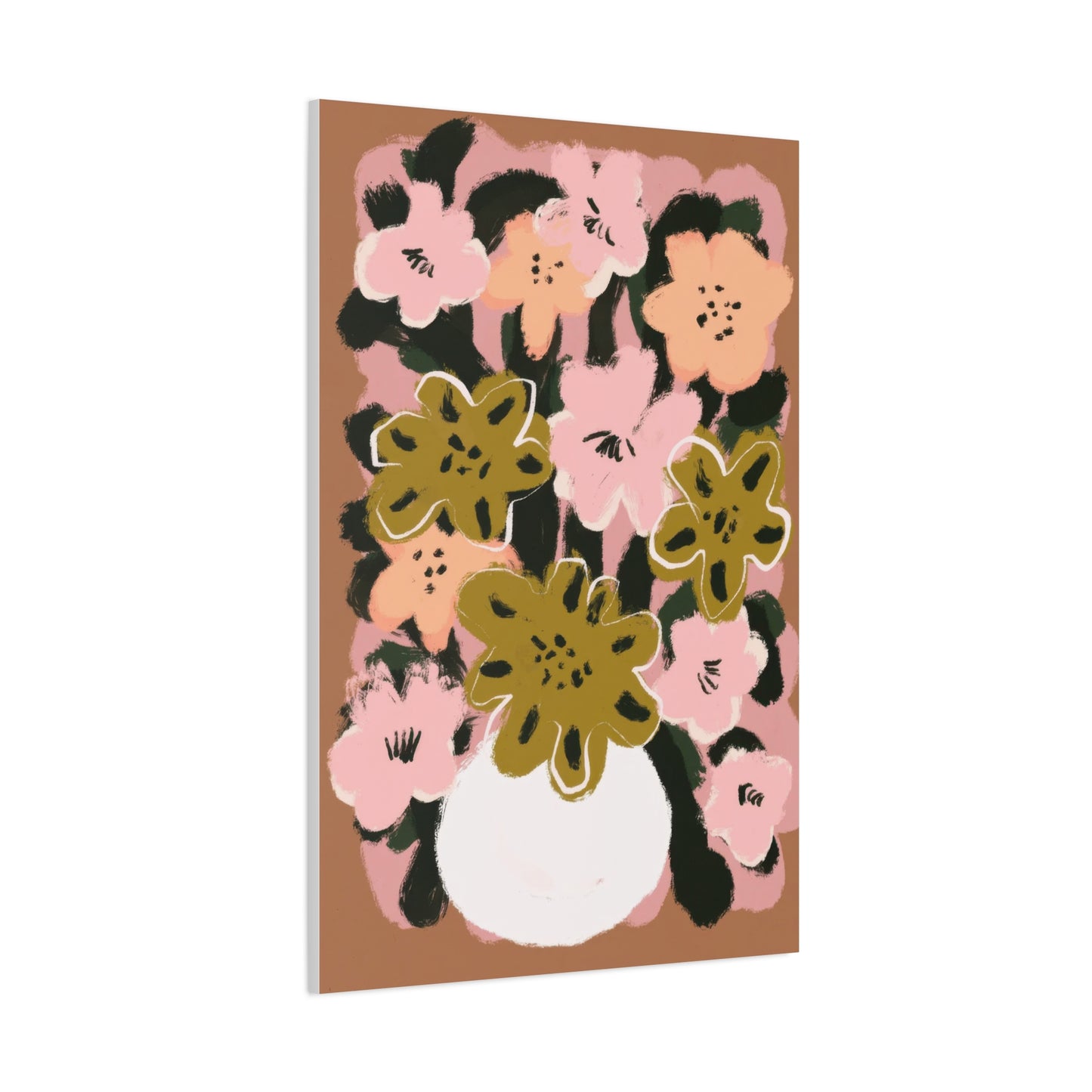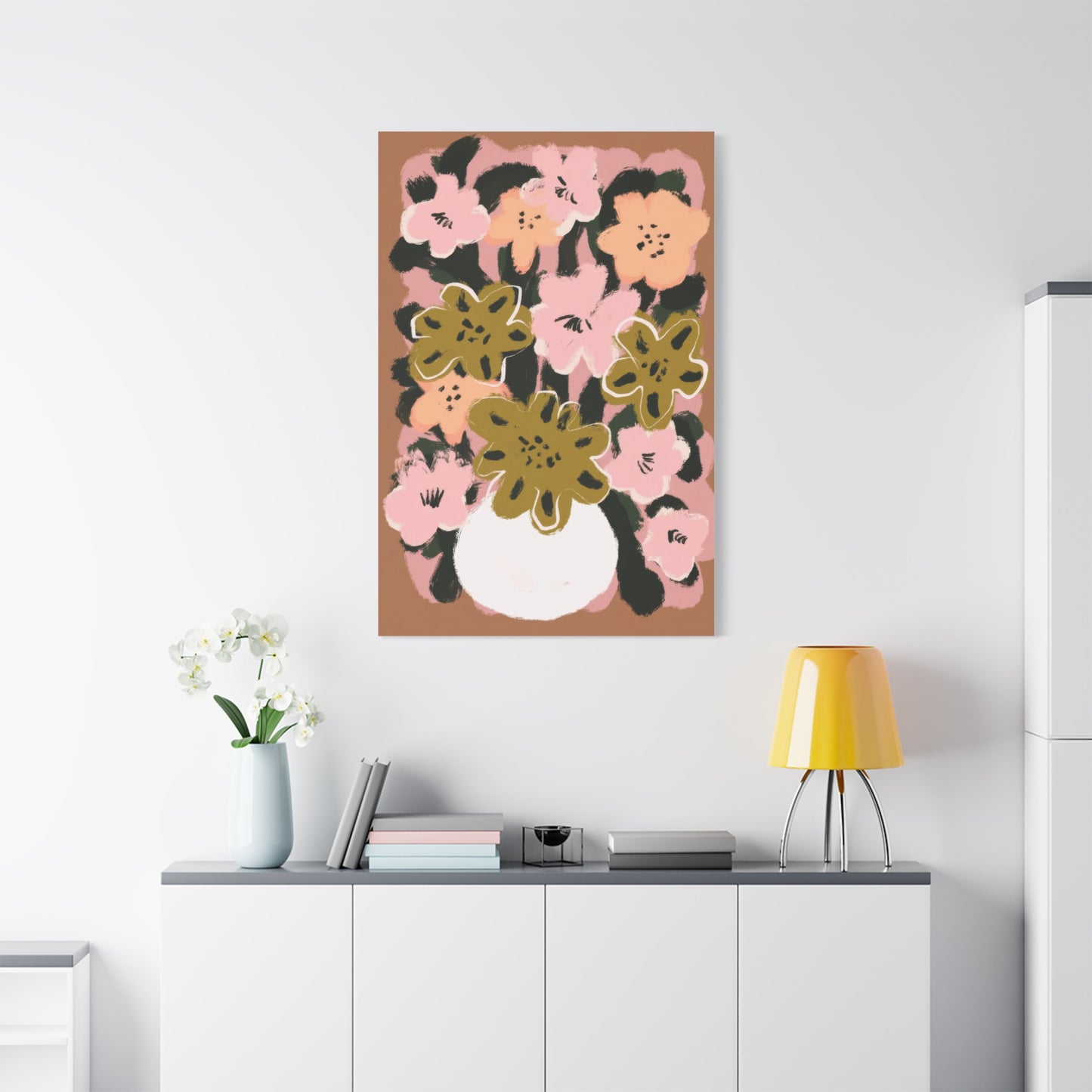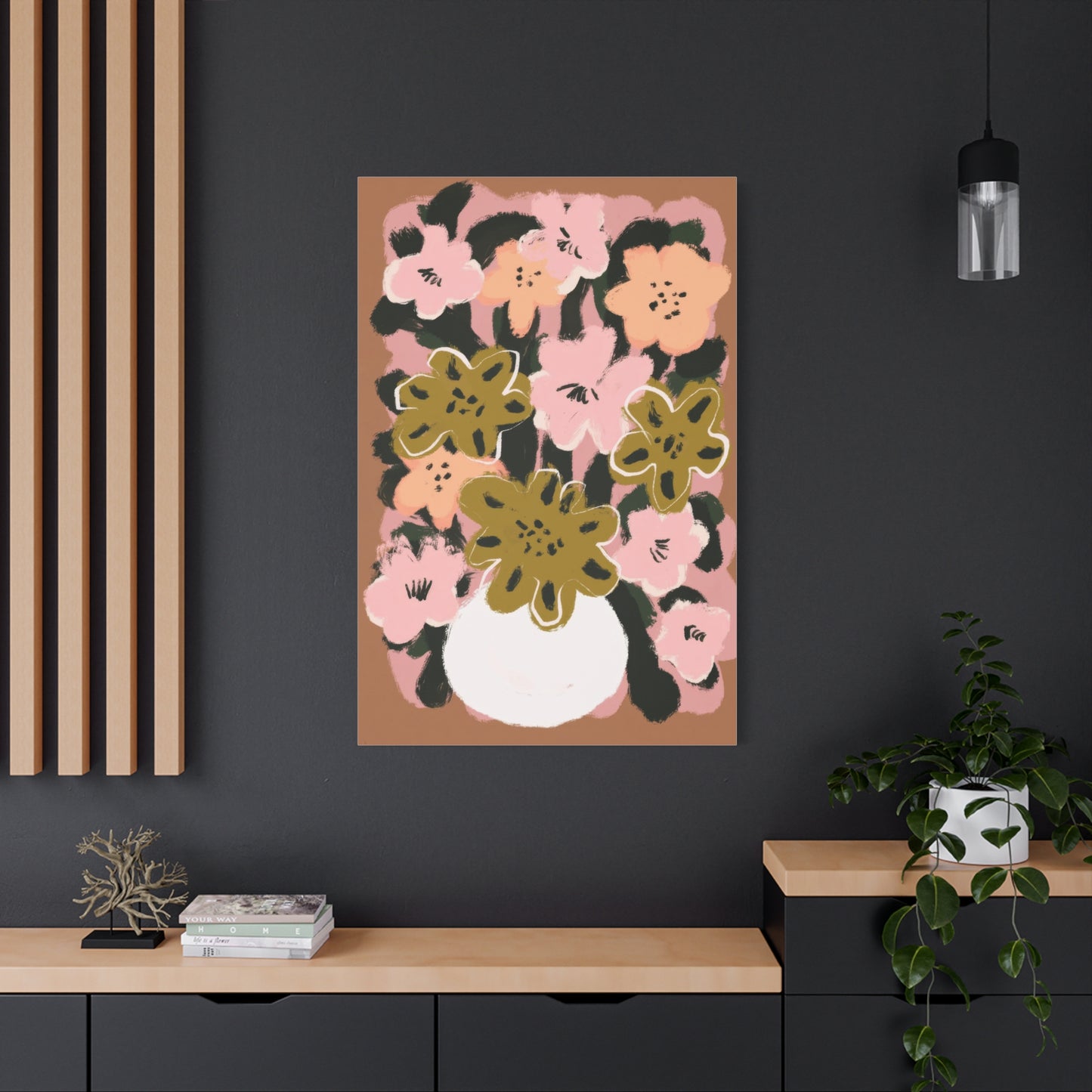Adding Life to Your Walls: Why Blooming Joy Wall Art Works Perfectly for Bedrooms and Living Rooms
Floral artwork has long been cherished for its ability to inject vitality and warmth into interior spaces. When you incorporate blooming joy wall art into your home, you're not simply hanging a decorative piece—you're inviting nature's most celebrated elements into your daily environment. These artistic representations of flowers in full bloom serve as visual reminders of growth, renewal, and the continuous cycle of beauty that exists in the natural world.
The visual impact of floral canvas displays extends far beyond mere aesthetics. Each petal, stem, and leaf captured in these artworks carries symbolic meaning that resonates with viewers on multiple levels. The vibrant hues found in blooming joy wall art stimulate the visual cortex, triggering emotional responses that can elevate mood and create a sense of tranquility. Research in environmental psychology suggests that exposure to floral imagery can reduce stress levels, lower blood pressure, and promote feelings of contentment. When strategically placed in living areas, bedrooms, or workspaces, these pieces become more than decoration—they transform into wellness tools that contribute to your overall quality of life.
The versatility of blooming joy wall art makes it suitable for virtually any interior design scheme. Whether your home features minimalist Scandinavian influences, maximalist bohemian flair, or classic traditional styling, floral canvas prints can be seamlessly integrated to enhance existing design elements. The key lies in selecting pieces that complement your color palette while adding unexpected visual interest. A predominantly neutral space gains tremendous personality when accented with vibrant floral artwork, while rooms already rich in color benefit from more subdued botanical prints that provide visual breathing room.
Consider the transformative power of scale when working with blooming joy wall art. Oversized canvas prints create dramatic focal points that immediately draw the eye and establish the aesthetic tone for an entire room. Conversely, smaller floral pieces can be arranged in gallery-style groupings to create dynamic visual narratives that guide visitors through your space. The arrangement possibilities are virtually limitless, allowing for personal expression and creative experimentation. Some homeowners prefer symmetrical, grid-like arrangements that convey order and intentionality, while others embrace asymmetrical compositions that feel organic and spontaneous.
The psychological benefits associated with floral imagery extend to cognitive function as well. Studies conducted by environmental psychologists have demonstrated that individuals working in spaces adorned with natural imagery, including floral artwork, exhibit improved concentration, enhanced creativity, and better problem-solving abilities. The presence of blooming joy wall art in home offices or study areas can therefore contribute to increased productivity and mental clarity. This connection between natural imagery and cognitive performance stems from our evolutionary relationship with flourishing environments, which our brains continue to recognize as indicators of safety and abundance.
Seasonal considerations also play a role in the appeal of blooming joy wall art. During winter months when outdoor landscapes may appear barren and colorless, interior floral displays provide much-needed visual warmth and reminders of spring's inevitable return. This psychological comfort becomes particularly valuable in regions experiencing prolonged periods of cold weather or limited daylight. The ability to maintain connection with nature's beauty regardless of external conditions represents one of the most compelling reasons to incorporate floral canvas prints into residential spaces.
Material quality significantly impacts the longevity and visual appeal of blooming joy wall art. Premium canvas prints utilize archival-grade materials and fade-resistant inks that preserve color vibrancy for decades. The texture of high-quality canvas adds dimensional depth that flat paper prints cannot replicate, creating subtle shadows and highlights that change with ambient lighting throughout the day. This dynamic quality ensures that your floral artwork never becomes visually stagnant—it evolves with natural light patterns, revealing new details during morning brightness and taking on warmer tones during golden hour.
Installation considerations for blooming joy wall art should account for lighting conditions, viewing angles, and surrounding furnishings. Artwork positioned opposite windows benefits from natural illumination without risking direct sunlight exposure that could compromise colors over time. Eye-level hanging remains the standard approach for most spaces, ensuring comfortable viewing without neck strain. However, creative installations that challenge conventional placement can yield striking results—consider hanging floral canvas prints lower than typical to complement low-profile furniture arrangements or higher to emphasize vertical space in rooms with elevated ceilings.
The emotional resonance of specific flowers depicted in blooming joy wall art adds layers of meaning to your selections. Sunflowers convey optimism and loyalty, roses communicate love and passion, while cherry blossoms symbolize fleeting beauty and mindfulness. Understanding these cultural associations allows you to curate artwork that aligns with personal values or desired emotional atmospheres. A meditation space might feature lotus blooms representing spiritual enlightenment, whereas a dining area could showcase peonies symbolizing prosperity and good fortune. This intentional selection process transforms decorating into a form of personal storytelling.
How Blooming Joy Canvas Prints Create a Positive Atmosphere
The science behind environmental psychology provides compelling evidence for the mood-enhancing properties of floral canvas prints. When individuals enter spaces featuring vibrant botanical artwork, their brains receive immediate visual stimulation that activates neural pathways associated with pleasure and reward. The amygdala, responsible for processing emotions, responds particularly strongly to floral imagery due to our species' evolutionary relationship with flowering plants as indicators of food sources and hospitable environments. This deeply ingrained biological response occurs subconsciously, creating positive associations before conscious thought even registers the artwork's presence.
Color theory plays a fundamental role in how blooming joy canvas prints influence atmospheric perception. Warm tones like reds, oranges, and yellows create energizing environments that promote social interaction and activity. These hues stimulate appetite and conversation, making them excellent choices for dining rooms and gathering spaces. Cooler tones such as blues, purples, and soft pinks generate calming effects that lower heart rates and encourage relaxation. Bedrooms and reading nooks benefit tremendously from these soothing color palettes, which facilitate mental decompression after demanding days.
The arrangement and composition of elements within blooming joy canvas prints contribute significantly to their atmospheric impact. Artwork featuring flowers in various stages of bloom communicates themes of growth and continuous renewal. Compositions with open, spacious backgrounds create feelings of possibility and freedom, while densely packed floral arrangements convey abundance and richness. The directional flow of stems and petals guides viewer attention, either encouraging contemplative focus on central elements or inviting exploratory viewing across the entire canvas.
Lighting interactions with canvas prints add dynamic atmospheric qualities that static decor cannot achieve. Morning sunlight filtering across textured canvas surfaces creates ever-changing patterns of light and shadow that bring floral subjects to life with remarkable dimensionality. Evening ambient lighting produces entirely different effects, softening edges and deepening color saturation to create cozy, intimate atmospheres. This responsiveness to environmental lighting conditions means blooming joy canvas prints continually refresh visual interest without requiring any adjustments or interventions.
The placement of floral canvas prints relative to functional spaces within rooms significantly influences how those areas are perceived and utilized. Artwork positioned above seating arrangements creates defined conversation zones that feel intentional and welcoming. Pieces flanking doorways or hallway passages guide movement through spaces while providing visual interest during transitions between rooms. Corner placements featuring blooming joy wall art transform often-neglected areas into destination points that anchor furniture arrangements and create balanced spatial distribution.
Seasonal atmospheric adjustments become effortless with strategically selected blooming joy canvas prints. Rotating artwork to feature spring blossoms during warmer months and rich autumn florals as temperatures cool maintains visual freshness while honoring seasonal progressions. This practice creates anticipatory excitement similar to seasonal wardrobe changes, marking time's passage in aesthetically meaningful ways. Alternatively, timeless floral compositions featuring flowers without strong seasonal associations provide year-round atmospheric consistency that grounds interior environments regardless of external conditions.
The psychological concept of biophilic design emphasizes human beings' innate need to connect with nature, even within built environments. Blooming joy canvas prints satisfy this fundamental requirement by bringing organic forms and natural color palettes into residential and commercial spaces. Research consistently demonstrates that biophilic design elements reduce stress markers, improve cognitive function, and enhance overall wellbeing. When daily routines unfold against backdrops featuring floral imagery, these benefits accumulate over time, contributing to improved mental health outcomes and greater life satisfaction.
Social atmospheres within homes are subtly but meaningfully influenced by decorative choices including blooming joy canvas prints. Guests entering spaces adorned with vibrant floral artwork receive immediate nonverbal communication about household values and aesthetic sensibilities. Floral imagery generally conveys openness, creativity, and appreciation for beauty—qualities that put visitors at ease and encourage authentic interaction. The conversation-starting potential of distinctive floral artwork should not be underestimated, as memorable pieces frequently become topics of discussion that facilitate social bonding.
Personal identity expression through blooming joy canvas prints allows homeowners to communicate aspects of their character without verbal explanation. Someone drawn to bold, oversized tropical flower prints reveals different personality traits than someone preferring delicate watercolor wildflower compositions. These artistic preferences reflect deeper values, memories, and aspirations, making artwork selections deeply personal decisions rather than mere decorative afterthoughts. When living spaces authentically represent residents' true selves, they become sanctuaries that support emotional wellbeing and self-actualization.
Bringing Joy and Vibrancy with Blooming Joy Art
The deliberate infusion of joy through visual art represents an accessible yet profoundly effective approach to enhancing daily life quality. Blooming joy art serves this purpose with particular effectiveness due to flowers' universal associations with celebration, beauty, and life's most precious moments. From birth announcements featuring delicate blossoms to wedding celebrations overflowing with floral arrangements, flowers mark humanity's most joyful occasions across virtually all cultures and traditions. Bringing these symbols into everyday environments through canvas prints extends that celebratory energy beyond special events into the ordinary moments that constitute most of our existence.
Vibrancy in visual art derives from multiple factors beyond simple color saturation. Compositional energy, created through dynamic arrangements and varied visual weights, generates movement that keeps eyes engaged and minds stimulated. Blooming joy art exhibiting strong compositional vibrancy features flowers at different scales, stems crossing at interesting angles, and backgrounds that support rather than compete with foreground elements. This visual complexity satisfies the human brain's appetite for stimulation while maintaining coherence that prevents overwhelming sensory experiences.
The relationship between color vibrancy and emotional response has been extensively documented in psychological research. Highly saturated colors trigger stronger emotional reactions than muted tones, with particular hues evoking specific feelings. Vibrant reds energize and excite, yellows inspire optimism and mental clarity, while brilliant blues instill calm confidence. Blooming joy art incorporating multiple vibrant hues creates emotional complexity that mirrors life's multifaceted nature, acknowledging that authentic joy encompasses a spectrum of feelings rather than singular emotional states.
Texture variations within canvas prints contribute significantly to overall vibrancy perception. The physical surface irregularities inherent in quality canvas materials create micro-shadows and highlights that shift with changing viewpoints and lighting angles. This subtle dimensionality prevents artwork from appearing flat or static, instead giving flowers depicted in blooming joy art a sense of tangible presence. Some artists enhance this effect through impasto techniques or mixed media applications that build actual physical texture into the canvas surface, creating artworks that engage tactile curiosity alongside visual interest.
The strategic use of contrast in blooming joy art amplifies vibrancy through juxtaposition rather than relying solely on brilliant colors. Dark backgrounds make brightly colored flowers appear even more luminous by comparison, while complementary color pairings create optical vibrations that heighten visual impact. Artists skilled in contrast manipulation can make moderately saturated colors appear remarkably vibrant through careful consideration of surrounding tones and values. This technique proves especially valuable in spaces where highly saturated colors might feel overwhelming, allowing for vibrant visual experiences within more restrained color palettes.
Cultural associations with specific flowers add layers of meaning to blooming joy art that transcend purely visual impact. Cherry blossoms carry profound significance in Japanese culture, symbolizing life's transient beauty and encouraging mindful appreciation of present moments. Lotus flowers hold sacred status in Buddhist and Hindu traditions, representing spiritual awakening and purity emerging from murky conditions. Sunflowers symbolize unwavering faith and adoration across multiple cultural contexts. Understanding these deeper meanings allows art selections to communicate specific messages and values, transforming decorative choices into philosophical statements.
The temporal quality of flowers—their relatively brief bloom periods followed by inevitable decline—imbues floral imagery with poignant awareness of impermanence. Blooming joy art captures flowers at their peak perfection, preserving fleeting beauty in permanent form. This preservation of ephemeral moments resonates deeply with viewers who recognize both the joy of beauty and the bittersweet reality of its temporary nature. This philosophical dimension elevates floral canvas prints beyond simple decoration, positioning them as meditations on time, change, and appreciating beauty while it exists.
Personal memory associations with specific flowers dramatically influence how individuals respond to blooming joy art. A rose variety matching wedding bouquets triggers warm nostalgia, while daffodils resembling grandmother's garden flowers evoke childhood comfort. These personal connections create unique relationships between viewers and artwork that cannot be replicated through other decorative elements. When selecting floral canvas prints, considering these individual associations ensures chosen pieces resonate on emotional levels that generic art selections cannot achieve.
The accessibility of blooming joy art makes joy enhancement available regardless of budget constraints or living situation limitations. Unlike extensive renovations or expensive furniture purchases, canvas prints offer relatively affordable means of dramatically transforming space perception. Renters unable to make permanent structural changes can still personalize their environments through artwork that travels easily between residences. This democratic accessibility ensures that the mood-enhancing benefits of floral imagery remain available to broad populations rather than functioning as luxury goods accessible only to affluent consumers.
Blooming Joy Wall Art: A Celebration of Color and Beauty
Color functions as the primary language through which blooming joy wall art communicates its aesthetic and emotional messages. The strategic deployment of hues within floral compositions creates visual hierarchies that guide viewer attention while establishing overall atmospheric tones. Dominant colors set primary emotional expectations—warm palettes suggesting energy and passion, cool palettes conveying tranquility and introspection. Secondary and accent colors add complexity and nuance, preventing simplistic emotional readings while enriching visual interest. This sophisticated color orchestration separates exceptional floral artwork from merely adequate examples.
The beauty concept itself proves remarkably subjective, varying significantly across cultures, historical periods, and individual preferences. What unites diverse beauty perceptions regarding blooming joy wall art is recognition of harmony—the balanced integration of multiple elements into coherent wholes. Harmonious compositions feature color relationships that complement rather than clash, scale variations that create interest without confusion, and negative space that allows visual elements breathing room. This harmony mirrors natural patterns found in successful ecosystems where diverse species coexist through balanced relationships.
Symbolic beauty in floral imagery extends beyond visual appeal to encompass meanings and associations accumulated through centuries of cultural practice. Flowers have served as communication tools throughout human history, with different species conveying specific messages in elaborate floral languages developed across various civilizations. Red roses declaring passionate love, white lilies expressing sympathy and purity, yellow tulips communicating cheerful thoughts—these associations enrich blooming joy wall art with communicative dimensions that purely abstract art cannot provide. Viewers educated in floral symbolism receive layered messages combining visual and conceptual beauty.
The celebration aspect of blooming joy wall art connects to humanity's ancient traditions of marking significant occasions with floral displays. Archaeological evidence reveals that flowers decorated dwelling spaces, religious sites, and burial locations throughout prehistory across geographically diverse cultures. This universal human impulse to surround ourselves with flowers during meaningful moments suggests deep psychological needs that blooming joy wall art continues satisfying in contemporary contexts. Installing floral canvas prints transforms everyday environments into spaces worthy of celebration, elevating routine activities through aesthetic enhancement.
Technical execution quality significantly impacts how successfully blooming joy wall art celebrates color and beauty. Printing technologies utilizing multiple ink cartridges produce more accurate color reproduction with smoother gradations between tones. Canvas preparation methods affect paint adhesion and long-term color stability. Frame construction influences how securely artwork hangs and how well canvas tension is maintained over years. These technical considerations separate investment-quality pieces from disposable decorations, ensuring that initial purchases continue delivering aesthetic value throughout extended ownership periods.
The interplay between realism and artistic interpretation in floral canvas prints creates fascinating aesthetic tensions. Photorealistic representations celebrate the precise beauty of actual flowers as they exist in nature, capturing every petal detail and color subtlety with remarkable accuracy. Impressionistic approaches prioritize emotional essence over literal accuracy, using loose brushwork and color liberties to convey the feeling of encountering flowers rather than their exact appearance. Abstract interpretations reduce flowers to fundamental shapes and colors, creating compositions that reference botanical subjects without depicting them literally. Each approach offers distinct aesthetic pleasures and serves different decorative purposes.
Monochromatic blooming joy wall art demonstrates that color celebration need not require rainbow palettes. Artworks exploring tonal variations within single hue families reveal surprising complexity and depth. Navy and powder blue flowers against slate backgrounds create sophisticated compositions that celebrate color subtlety rather than vibrancy. Sepia-toned floral prints evoke vintage nostalgia while maintaining visual interest through value contrasts. These monochromatic approaches suit spaces where multicolored artwork might create visual competition with existing design elements, proving that restrained color palettes can still deliver significant aesthetic impact.
The scale at which colors appear within blooming joy wall art influences their psychological impact. Large color fields create immersive experiences that envelop viewers in particular emotional atmospheres. Small color accents function as visual punctuation marks that guide attention and create rhythmic viewing experiences. The relationship between foreground and background colors establishes spatial depth perception, with warm colors advancing toward viewers and cool colors receding. Artists manipulating these scale and spatial effects create dynamic compositions that engage viewers through multiple viewing sessions, continually revealing new details and relationships.
Beauty appreciation develops through exposure and education, making blooming joy wall art vehicles for aesthetic development. Children growing up surrounded by quality floral artwork develop more sophisticated visual literacy and aesthetic discernment. Adults seeking to refine their design sensibilities benefit from regular engagement with well-executed floral compositions, gradually internalizing principles of color harmony, compositional balance, and stylistic coherence. This educational dimension transforms artwork from passive decoration into active learning tools that cultivate increasingly refined aesthetic sensibilities over time.
How Blooming Joy Canvas Prints Enhance Your Living Space
Living space enhancement through floral canvas prints operates on multiple simultaneous levels—visual, emotional, functional, and social. The visual transformation proves most immediately apparent, as bare walls gain focal points that anchor furniture arrangements and establish color schemes. Previously disjointed rooms develop cohesive identities through strategically selected artwork that ties disparate elements together. The emotional enhancement follows naturally from visual improvements, as aesthetically pleasing environments generate positive emotional responses that accumulate throughout daily exposure. Functional improvements emerge through artwork's ability to define distinct zones within open floor plans and influence traffic flow patterns. Social enhancement results from increased pride in living spaces, encouraging more frequent entertaining and deeper guest engagement.
Spatial perception undergoes significant alteration through strategic canvas print placement. Vertical artwork emphasizes ceiling height, making rooms feel more spacious and grand. Horizontal compositions expand perceived wall width, counteracting narrow room proportions. Large-scale prints create intimacy in oversized rooms by establishing focal points that draw spaces inward. Conversely, smaller pieces arranged in groupings add interest to compact areas without overwhelming limited square footage. Understanding these spatial manipulation techniques allows homeowners to address architectural limitations through artistic interventions rather than expensive structural modifications.
Light reflection and absorption properties of canvas prints influence room brightness and ambiance. Artwork featuring predominantly light colors with white or cream backgrounds reflects ambient light, brightening spaces that might otherwise feel dim. Darker floral compositions absorb light, creating cozy atmospheres appropriate for relaxation-focused areas. Glossy canvas finishes enhance light reflection while matte surfaces minimize glare, with selection depending on room lighting conditions and desired effects. These technical considerations ensure artwork contributes positively to overall lighting schemes rather than creating unintended shadows or bright spots.
The psychological principle of environmental personalization explains why living spaces adorned with personally meaningful artwork generate greater satisfaction than generic spaces. Blooming joy canvas prints selected based on individual preferences, memories, or aspirations transform houses into homes by infusing physical structures with personal narratives. This personalization creates emotional anchoring that strengthens attachment to living spaces, contributing to residential stability and neighborhood community engagement. Spaces reflecting authentic identity support psychological wellbeing by providing environments where residents can fully express themselves without judgment or pretense.
Acoustic properties of canvas-wrapped artwork provide unexpected functional benefits beyond aesthetic enhancement. The canvas material and air gap between canvas and wall absorb sound waves, reducing echo and reverberation within rooms. While not replacing dedicated acoustic treatments in music rooms or home theaters, blooming joy canvas prints contribute to overall acoustic comfort by softening harsh reflections from hard surfaces like windows, hardwood floors, and painted walls. This subtle acoustic improvement enhances conversation clarity and reduces ambient noise fatigue, particularly valuable in open-concept living areas where sound management challenges frequently arise.
Maintenance considerations for canvas prints prove remarkably minimal compared to other enhancement options. Unlike live plants requiring watering, fertilizing, and pest management, or intricate decor demanding regular dusting and cleaning, canvas artwork needs only occasional light dusting with soft cloths or feather dusters. Quality canvas prints resist moisture and temperature fluctuations better than paper prints, maintaining stability in typical residential conditions without special climate control. This low-maintenance characteristic makes blooming joy canvas prints ideal for busy households where extensive upkeep routines prove impractical.
Investment value represents an often-overlooked aspect of living space enhancement through quality artwork. While mass-produced prints hold minimal resale value, limited edition pieces from recognized artists appreciate over time, potentially generating financial returns alongside aesthetic enjoyment. Even unlimited prints from talented emerging artists offer better value retention than disposable fast-fashion decor items discarded during frequent redecorating cycles. Viewing artwork purchases as investments encourages more thoughtful selection processes and higher quality standards, ultimately resulting in more satisfying long-term outcomes.
The flexibility of canvas prints facilitates experimental design approaches without permanent commitment. Unlike wallpaper installation or custom millwork, artwork can be easily repositioned, swapped between rooms, or stored during design transitions. This adaptability encourages creative risk-taking and style evolution as personal preferences develop. Homeowners can test bold color schemes through artwork before committing to paint selections, or experiment with different aesthetic directions across various rooms while maintaining cohesive underlying design principles. This low-risk experimentation pathway supports confident design decision-making that reflects authentic preferences rather than playing safe with generic choices.
Restorative environment theory from environmental psychology posits that certain settings support psychological restoration after stressful experiences. Key restorative elements include fascination that captures attention effortlessly, extent creating perception of coherent worlds beyond immediate surroundings, being away enabling mental distance from routine concerns, and compatibility matching environmental characteristics with individual purposes. Blooming joy canvas prints contribute to all four restorative elements—floral beauty provides soft fascination, detailed compositions suggest extensive natural worlds, botanical subjects offer mental escape from urban stress, and varied styles ensure compatibility across individual preferences. Living spaces incorporating these restorative elements function as daily retreats that rebuild psychological resources depleted through demanding activities.
Blooming Joy: The Perfect Art for Uplifting Any Room
Room-specific considerations guide optimal canvas print selections for maximum uplifting impact. Entryways and foyers benefit from bold, welcoming floral compositions that create positive first impressions for residents and visitors alike. These initial visual encounters set atmospheric expectations for entire homes, making artwork placement near entries strategically important. Living rooms accommodate larger, more dramatic pieces that anchor seating arrangements and encourage contemplative viewing during leisure time. Dining areas thrive with vibrant, appetite-stimulating color palettes that enhance mealtime enjoyment and facilitate conversation flow.
Bedroom artwork selections should prioritize calming qualities that support relaxation and sleep preparation. Soft color palettes featuring lavenders, blues, and gentle pinks create soothing environments conducive to unwinding after demanding days. Composition simplicity prevents visual overstimulation that might interfere with sleep onset. Placement directly opposite beds ensures artwork becomes the last image viewed before sleep and first seen upon waking, bookending rest periods with beauty that influences dream content and morning mood. Some sleep researchers suggest viewing calming imagery before bed improves sleep quality by reducing anxious thought patterns that delay sleep onset.
Home office environments require careful artwork balance between stimulation supporting productivity and tranquility preventing stress escalation. Blooming joy canvas prints featuring moderate color saturation and balanced compositions maintain visual interest without creating distraction. Positioning artwork within peripheral vision rather than directly behind computer screens allows subconscious mood benefits without conscious attention diversion during focused work. The presence of natural imagery in work environments correlates with reduced burnout rates, fewer sick days, and higher job satisfaction according to multiple workplace psychology studies. These benefits translate effectively to home office settings where environmental control falls entirely to individual workers.
Bathroom spaces, often neglected in decorating plans, present unique opportunities for uplifting artwork impact. The privacy and solitude of bathrooms create ideal conditions for personal reflection and mental preparation for daily challenges. Blooming joy canvas prints in these intimate spaces serve as daily affirmations of beauty's importance and life's capacity for renewal. Moisture-resistant canvas treatments ensure artwork withstands humid conditions typical of bathrooms, maintaining appearance quality despite environmental challenges. The psychological ritual of beginning and ending days surrounded by beauty establishes positive mental frameworks that influence subsequent experiences.
Children's spaces demand special consideration in artwork selection, balancing playful appeal with aesthetic quality that withstands changing preferences as children mature. Floral canvas prints featuring bright primary colors and simple compositions engage young children while maintaining visual sophistication that doesn't feel juvenile as kids grow older. Educational opportunities arise through discussing flower varieties, color relationships, and artistic techniques depicted in bedroom artwork. This casual art education fosters cultural literacy and aesthetic appreciation that benefits children throughout their lives, potentially inspiring creative pursuits or simply enriching general life experience quality.
Multi-functional spaces increasingly common in contemporary homes challenge decorators to create cohesive aesthetics across diverse activities. Rooms serving as both home offices and guest bedrooms, or kitchen-dining-living combinations require artwork versatility matching varied functional demands. Blooming joy canvas prints featuring neutral backgrounds with colorful floral subjects adapt successfully across different contexts—professional enough for work video calls, relaxing for personal downtime, and aesthetically interesting for guest impressions. This versatility makes floral artwork particularly valuable in homes where spatial limitations require rooms to serve multiple purposes.
Transitional spaces including hallways, staircases, and landing areas benefit enormously from artwork that transforms utilitarian passages into destination-worthy experiences. Gallery walls featuring multiple coordinated canvas prints create evolving visual narratives that reward attentive viewing during daily travels through homes. Stairwell installations visible from multiple levels throughout homes establish visual continuity connecting different floors. These often-overlooked areas consume significant square footage in many homes, representing untapped potential for aesthetic enhancement that blooming joy canvas prints effectively address.
Seasonal room usage patterns influence optimal artwork selections for spaces primarily utilized during specific times of year. Sunrooms and screened porches enjoyed mainly during warmer months benefit from artwork echoing outdoor surroundings, blurring boundaries between interior and exterior environments. Basement recreation rooms receiving heaviest use during cold weather months require mood-lifting artwork compensating for limited natural light and outdoor access. Understanding these usage patterns ensures artwork selections deliver maximum benefit during periods when spaces receive most attention, optimizing return on aesthetic investments.
The concept of room uplift extends beyond simple mood improvement to encompass functional performance enhancement. Spaces that feel genuinely uplifting through aesthetic choices encourage more frequent and prolonged use. Home gyms adorned with energizing floral artwork motivate more consistent exercise routines. Reading nooks featuring calming botanical prints increase time spent reading. Craft rooms with inspiring floral compositions stimulate creative output. These functional improvements demonstrate that artwork's value transcends decoration, actively shaping how effectively spaces serve their intended purposes.
Why Blooming Joy Wall Art Works in Modern Interiors
Modern interior design philosophy emphasizes clean lines, uncluttered spaces, and carefully curated decorative elements that serve clear purposes. Within this aesthetic framework, blooming joy wall art functions as intentional organic counterpoint to geometric architectural features and minimalist furniture selections. The natural curves and irregular forms characteristic of flowers provide visual relief from angular precision dominating contemporary built environments. This juxtaposition between organic and geometric creates dynamic tension that prevents modern spaces from feeling cold or sterile despite their streamlined appearances.
Color application in modern interiors typically follows restrained palettes featuring neutrals punctuated by carefully selected accent hues. Blooming joy wall art serves this accent function exceptionally well, introducing controlled color bursts that enliven neutral backdrops without overwhelming spatial coherence. A predominantly white and gray living room gains personality through a single large-scale floral canvas featuring jewel-toned flowers, with throw pillows and accessories repeating accent colors drawn from the artwork. This strategic color distribution maintains modern aesthetic principles while preventing the visual monotony that plagues poorly executed minimalist spaces.
The authenticity emphasis central to contemporary design values aligns perfectly with floral subject matter's inherent genuineness. Flowers cannot be manufactured or mass-produced in the same way as consumer goods—they remain fundamentally natural elements despite cultivation advances. This authentic natural quality resonates with modern consumers increasingly skeptical of artificial and synthetic products across multiple life domains. Displaying nature-derived imagery through blooming joy wall art expresses values alignment with sustainability, organic living, and environmental consciousness that characterize contemporary lifestyle movements.
Scale manipulation represents a favorite technique among modern designers, with dramatic size contrasts creating visual impact in simplified environments. Oversized floral canvas prints embrace this approach, transforming single flowers into monumental subjects commanding attention through sheer scale. Close-up compositions that would capture only portions of flowers at normal scale gain abstract qualities when enlarged dramatically, revealing details invisible to casual observation. These scale experiments satisfy modern design's appetite for innovation while maintaining connection to recognizable subject matter that prevents complete abstraction.
Material honesty, another modern design principle, finds expression in canvas print presentation choices. Gallery-wrapped canvases without additional framing showcase material authenticity by leaving raw canvas edges visible. This honest presentation acknowledges artwork construction rather than disguising it beneath elaborate frames. The resulting aesthetic feels contemporary and unpretentious, aligning with modern values around transparency and authenticity. When high-quality materials are used, this honest presentation becomes celebration of craftsmanship rather than exposure of deficiency.
Open floor plans dominating contemporary architecture create zoning challenges that artwork helps address. Large floral canvas prints positioned strategically define distinct functional areas within continuous spaces without requiring physical barriers that would compromise openness. A substantial botanical print above a dining table clearly designates eating areas, while different artwork above living room sofas establishes separate relaxation zones. This visual zoning technique maintains modern aesthetic preferences for open, flowing spaces while providing psychological boundaries that help occupants shift mental states between activities.
The current maximalist counter-movement to extreme minimalism finds expression in abundant, exuberant floral artwork that celebrates decorative excess. Modern maximalism embraces pattern, color, and ornamentation rejected by strict minimalism while maintaining contemporary sensibilities through sophisticated execution and intentional curation. Blooming joy wall art featuring dense floral arrangements and saturated color palettes supports this aesthetic direction, providing focal point drama that anchors richly decorated spaces. This flexibility allowing floral artwork to serve both minimalist and maximalist modern interiors demonstrates remarkable versatility across contemporary design spectrum.
Technology integration in modern homes creates potential conflicts between natural and artificial elements. Blooming joy wall art bridges this divide, offering organic visual counterbalance to screens, smart home interfaces, and electronic devices pervading contemporary residences. The contrast between living flowers in artwork and glowing pixels in technology creates healthy reminders that human wellbeing requires nature connection alongside digital convenience. This balancing role proves increasingly important as technology presence in homes continues expanding, threatening to completely dominate residential visual environments.
Sustainability concerns driving many modern design decisions extend to artwork selection criteria. Canvas prints utilizing eco-friendly inks, sustainably sourced materials, and local production methods align with environmental values important to contemporary consumers. The longevity of quality canvas prints supports sustainable consumption patterns by reducing replacement frequency compared to disposable decor items. Choosing timeless floral subjects rather than trendy graphics ensures artwork remains aesthetically relevant across years or decades, preventing premature disposal driven by style obsolescence. These sustainability considerations make blooming joy wall art compatible with values-driven modern lifestyle choices.
Creating a Feel-Good Vibe with Blooming Joy Canvas Prints
Intentional atmosphere creation through strategic design choices represents sophisticated understanding of environment's profound influence on emotional states. Creating genuine feel-good vibes requires more than superficial prettiness—it demands thoughtful integration of elements that consistently generate positive emotional responses across varied circumstances and moods. Blooming joy canvas prints contribute to this atmosphere through multiple mechanisms operating simultaneously. Visual beauty provides immediate sensory pleasure, nature imagery triggers biophilic responses promoting wellbeing, color psychology influences emotional states, and symbolic associations with flowers activate positive memories and cultural meanings.
The cumulative effect principle explains why multiple coordinated design elements create stronger atmospheric impacts than isolated pieces regardless of individual quality. A single floral canvas print certainly improves space aesthetics, but coordinating that artwork with complementary textiles, accessories, and furniture selections amplifies overall effect exponentially. When throw pillow colors echo flowers depicted in wall art, when furniture shapes mirror organic curves found in botanical subjects, and when material textures complement canvas weave characteristics, the resulting environment feels intentional and cohesive. This cohesion generates psychological comfort stemming from pattern recognition and aesthetic harmony.
Personalization depth significantly influences how effectively environments generate authentic feel-good vibes. Generic hotel room aesthetics rarely create genuine warmth despite professional execution because they lack personal meaning and individual story. Blooming joy canvas prints selected based on personal preferences, meaningful memories, or aspirational values transform impersonal spaces into extensions of resident identities. A sunflower print chosen because grandparents cultivated sunflowers carries emotional resonance that random floral artwork cannot replicate. These personal connections create emotional anchoring that generic beauty alone cannot achieve.
Sensory layering beyond visual elements strengthens feel-good atmospheres by engaging multiple perception channels simultaneously. While blooming joy canvas prints address visual sense, complementing artwork with fresh flowers introduces natural fragrance, soft textiles add tactile interest, and carefully selected music completes auditory environment. This multisensory approach creates immersive experiences that feel more complete and satisfying than environments engaging single senses. The synergy between visual floral artwork and actual flower presence in spaces creates particularly powerful effects, reinforcing nature themes through multiple sensory modalities.
Lighting design profoundly impacts how effectively blooming joy canvas prints contribute to feel-good atmospheres. Artwork benefits from dedicated illumination highlighting colors and details while creating ambient light contributing to overall room atmosphere. Picture lights mounted above or below canvas prints direct attention while adding warm glow to surrounding areas. Strategically positioned floor or table lamps angled toward artwork create dramatic shadows and highlights emphasizing texture and dimension. Adjustable lighting systems allowing intensity and color temperature modifications enable atmospheric customization matching different times of day and activity types.
The psychological concept of environmental mastery—feeling control over surrounding conditions—contributes significantly to wellbeing and life satisfaction. Blooming joy canvas prints support this mastery by representing intentional choices reflecting personal agency and aesthetic judgment. Unlike architectural features beyond individual control in rental situations, artwork selections remain entirely within resident discretion. This autonomy, however limited to decorative realm, satisfies fundamental psychological needs for self-determination and personal expression. The satisfaction derived from successfully creating pleasing environments extends beyond mere aesthetic pleasure to encompass pride in demonstrated competence and realized vision.
Social validation reinforces feel-good vibes created through thoughtful design choices. Guest compliments on artwork selections provide external confirmation of aesthetic judgment and design skill. These social reinforcements strengthen emotional connections to spaces and artwork, increasing satisfaction beyond intrinsic pleasure derived from beauty alone. The shareable nature of attractive spaces in social media era extends this validation potential beyond physical visitors to online audiences, though experts caution against prioritizing external validation over personal satisfaction in design decisions.
Temporal consistency in feel-good atmosphere maintenance requires artwork that remains personally meaningful across extended periods. While trendy graphics might generate initial excitement, floral subjects possess timeless appeal that maintains relevance despite shifting style movements. The enduring nature of flower imagery across human cultures and historical periods suggests deep significance unlikely to fade with passing trends. This longevity protects against the disappointment and expense of replacing artwork that no longer resonates emotionally, ensuring initial investments continue delivering psychological returns indefinitely.
Adaptive capacity allows feel-good environments to support varied emotional needs across different life circumstances. During challenging periods, comforting familiarity of beloved floral artwork provides stability and continuity. During celebratory times, that same artwork participates in joy through continued presence during happy moments. This emotional versatility distinguishes truly effective environmental elements from those serving narrow purposes. Blooming joy canvas prints function as constant companions through life's fluctuations, their presence reliable even when other circumstances change dramatically.
Conclusion
Blooming joy wall art offers an effortless way to breathe life into your home, transforming any bedroom or living room into a vibrant, uplifting sanctuary. With its vivid colors, dynamic floral motifs, and the sense of vitality that blooms within each piece, this type of art not only enhances your décor but also creates an atmosphere that feels welcoming, calming, and full of positive energy. Whether you're looking to add a touch of nature's beauty to your personal space or create a cheerful, inviting environment in your living area, blooming joy wall art brings a sense of light and hope to your walls, offering a visual escape into a world of serenity and warmth.
The presence of flowers in art has long been associated with joy, beauty, and renewal. When these blooms are depicted in their most vibrant, blossoming form, they carry an energy that uplifts the spirit and evokes a sense of happiness and well-being. In bedrooms, blooming joy wall art can serve as a soothing focal point, infusing the room with a calming, restful energy that promotes relaxation and peaceful sleep. The soft pastel hues or vivid splashes of color in floral art create a serene yet lively atmosphere, making it the perfect addition to a space where tranquility is key.
In living rooms, blooming joy wall art can become the centerpiece that sets the tone for the entire space. Living rooms are often where families gather and entertain guests, and having art that embodies positivity and joy can create an inviting atmosphere that encourages connection, conversation, and comfort. The dynamic colors and shapes of blooming flowers provide a visual burst of life that enlivens the room, offering a sense of warmth and energy that makes everyone feel at home. Whether hung above a sofa, in a gallery wall, or as part of a larger design scheme, blooming joy art serves as an anchor piece, drawing the eye and fostering a sense of harmony.
The symbolic nature of blooming flowers also adds layers of meaning to the artwork. Flowers represent new beginnings, growth, and the potential for personal transformation. Their ability to bloom after weathering harsh conditions makes them powerful symbols of resilience, reminding us that beauty and joy can emerge from even the most challenging times. By incorporating blooming joy wall art into your home, you’re not only beautifying your space but also inviting these themes of renewal and hope into your life. Each glance at a blooming flower can serve as a gentle reminder of the potential for growth, both in nature and in ourselves.
Another reason blooming joy wall art works perfectly in both bedrooms and living rooms is its versatility. Whether your décor is modern, bohemian, rustic, or traditional, blooming floral art can seamlessly blend into various design styles. The organic shapes and colors of flowers complement a wide range of furniture and accessories, creating a cohesive, polished look while still adding an element of playfulness and joy. In a minimalist setting, a bold floral piece can provide the perfect pop of color, while in a more eclectic or vintage-inspired room, it adds a soft touch of nature that ties the entire design together.
Ultimately, blooming joy wall art is a transformative addition to any room, imbuing your living spaces with beauty, energy, and a sense of life. It fosters an uplifting environment where you can relax, reflect, and feel energized. Whether placed in a cozy bedroom or a lively living room, these artworks create a visual experience that elevates the mood, making your home feel more vibrant, inviting, and full of warmth. The joy and renewal that blooming flowers represent can fill your space with a positive aura, enhancing not just your décor but your overall well-being. By adding this type of art to your home, you are creating an environment that celebrates beauty, growth, and the endless possibilities that each new day brings.

















